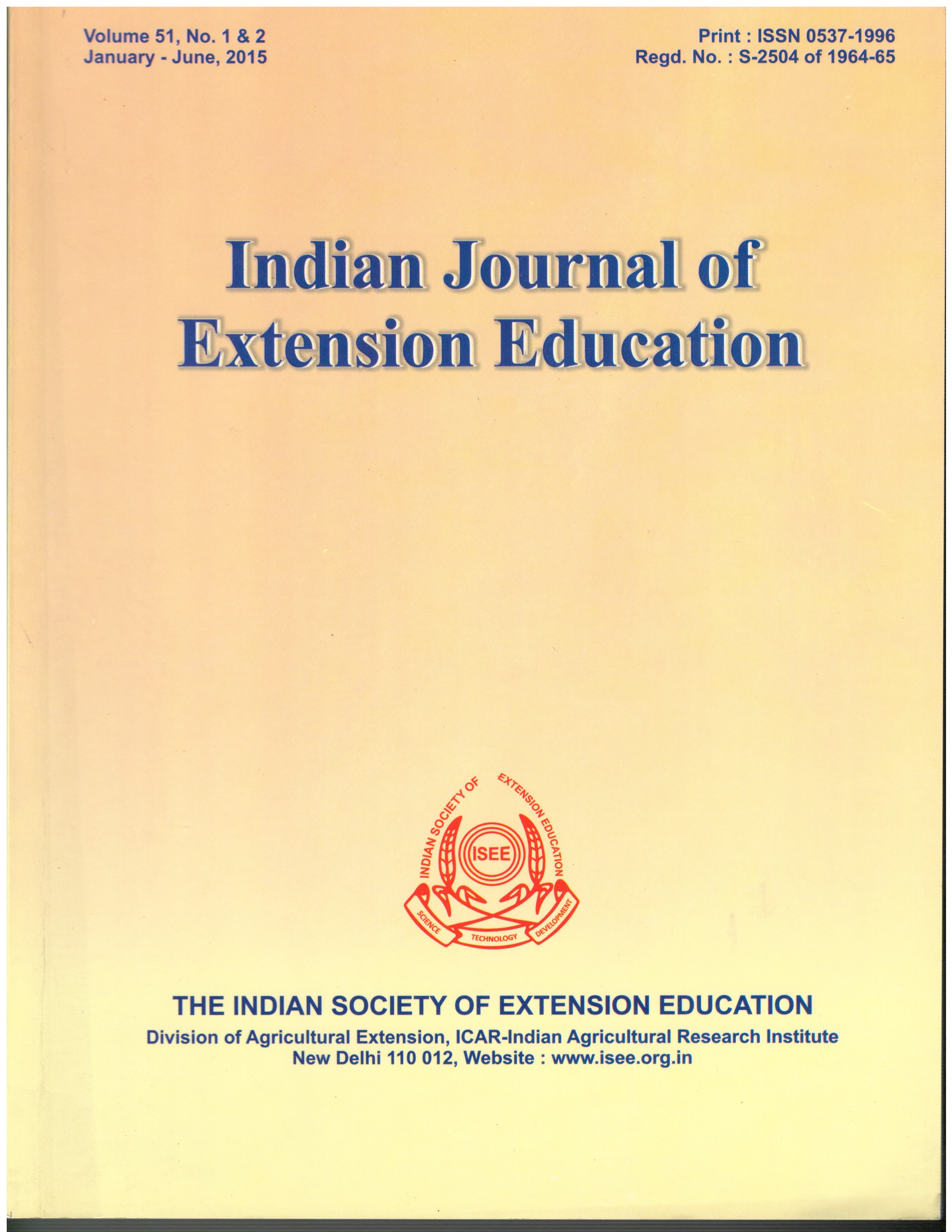Production Recommendations and Information Source Utilization of Rapeseed Mustard Growers in Sub-tropics of Kathua District in Jammu Division.
59 / 3
Abstract
Oilseed plays an important role in agriculture economy in many regions of the world. Oilseed is a major source of
protein and contributes considerably to the export earnings. Major oilseed producing countries in the world are
USA, Brazil, Argentina, China and India and account for 82 per cent of oilseed production in the world. In the
category of oilseed crops, rapeseed mustard is grown in both the regions of J&K state. In Jammu division, rapeseed
mustard is grown in Sub-tropical and temperate agro-climatic zones. The present investigation was carried out to
study the adoption of production recommendations of rapeseed mustard in the subtropical zone of Kathua district. A
list of 522 mustard growers was procured from Department of Agriculture of Kathua district and 95 respondents
were selected randomly with the help of random number generator. A comprehensive data collection tool was
devised for collection of data. After pretesting and needful modifications the data was collected from selected 95
respondents. It has been concluded from the study that toria is the main rapeseed mustard crop grown by the farmers
of the study area and all the respondents were using their own seed and they were of the view that toria crop raised by
using own seed attains early maturity which does not hamper the timely sowing of wheat crop. It has been observed
that farmers of the study area are not adopting the recommended seed rate and none of the farmers are adopting seed
treatment. Regarding chemical fertilizers, farmers are not using potassic fertilizer for growing rapeseed mustard
crops. Department of agriculture and co-farmers are the main sources of agri-input information.
Downloads
Submitted
Published
Issue
Section
License
Copyright (c) 2015 Indian Society of Extension Education, Division of Agricultural ExtensionICAR- IARI, New Delhi

This work is licensed under a Creative Commons Attribution-NonCommercial-ShareAlike 4.0 International License.
- The manuscripts once accepted and published in the Indian Journal of Extension Education will automatically become the property of the Indian Society of Extension Education, New Delhi. The Chief Editor on behalf of the Indian Journal of Extension Education holds the copyright.




